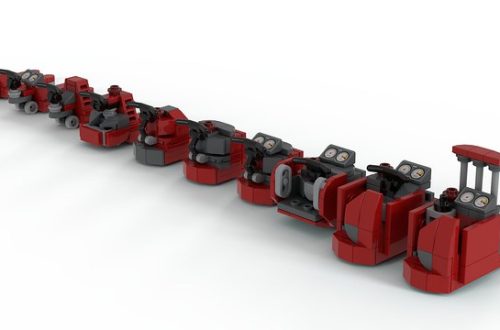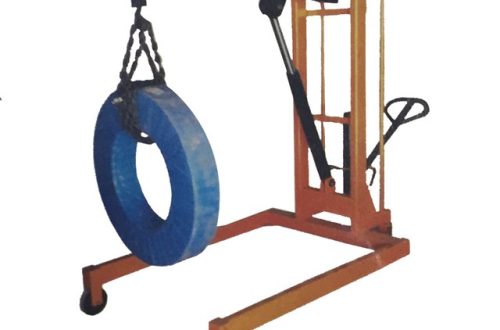Hand Pallet Trucks – Warehouse Superheroes
Hand Pallet Trucks – Warehouse Superheroes
A hand pallet is a warehouse superhero that makes heavy-load transport a breeze. It can handle narrow aisles, tight lorry loading areas and steep ramps with ease.
Push the pallet jack to the load you wish to move and engage the lever by pressing it up to lower the prongs. Once they are lowered, slide them underneath the load and use the handle to pump in a lifting motion.
Fork Length
The fork length of a hand pallet can play an important role in determining its compatibility with different types of loads and working environments. The fork length of a hand pallet should be compatible with the dimensions of the pallets and loads you typically handle to ensure stability, maneuverability and safe operation. If you often deal with oversized or long pallets, opt for a hand pallet that features longer forks to accommodate these sizes. Conversely, if your work environment requires maneuvering in narrow aisles or confined spaces, shorter forks can improve maneuverability and accessibility.
The load capacity of a hand pallet is another important factor to consider when choosing a model. The higher the load capacity, the more weight the pallet can lift. However, it’s important to keep in mind that a high load capacity can also affect stability and maneuverability. If you’re considering a hand pallet with a high load capacity, consult the manufacturer’s guidelines or seek expert advice to determine the right balance between performance and safety.
Some hand pallets feature floatable pallet forks that automatically adjust to maintain a level position. This improves operator comfort and efficiency, especially when handling variable loads. The floatable pallet forks also prevent hand pallet damage to the load, pallet or other materials, as they are less likely to tip when inserted into a loading hole.
Cushioned Handle Grips
The handle grips on a hand pallet are important for ensuring comfortable operation of the device and mitigating operator fatigue. They should be soft, ergonomically designed to support natural hand positioning, and have a non-slip surface. This ensures the operator can maneuver loads with ease, while reducing hand fatigue and minimizing the risk of blisters or other injuries.
Steering and maneuverability are also important factors to consider when choosing a hand pallet. Ideally, the device should be capable of navigating obstacles and tight spaces with ease. In addition, the wheels should be abrasion-resistant to prevent floor marks and other damage.
Depending on the needs of your facility, you may require a hand pallet with a higher load capacity than standard models. Heavy-duty hand pallets are available with increased capacities of up to 8,000 pounds, enabling them to handle large and bulky loads.
Other important features to consider include load backrests, fork extensions, and scale systems. These accessories and add-ons improve stability, handling, and performance, maximizing operational efficiency. Load backrests reduce the strain on the operator when lifting and transporting heavy loads, while fork extensions allow the hand pallet to accommodate oversized or non-standard pallets. Scale systems integrated into the hand pallet enable weighing of loads directly during the loading and transportation process, streamlining inventory management. This feature can also mitigate potential accidents caused by overloading.
Safety Features
As with any equipment, proper care and maintenance will help to ensure a long lifespan. This includes routine inspections to identify and address problems before they lead to downtime and/or expensive repairs. It also includes ensuring that operators are properly trained in the safe operating procedures of the hand pallet.
Training programs should include demonstrations of how to correctly place a load on the pallet and how to safely maneuver it during movement. This will prevent obstructive loads from becoming stuck or falling off during transport and resulting in product damage. This can lead to costly returns and repackaging, which ultimately increases shipping costs.
It is also important to avoid overloading the hand pallet, as this can cause it to tip over during transport. It is recommended to keep a clearance of about one inch between the floor and the pallet to minimize this risk.
Lastly, it is essential to wear the appropriate personal protective equipment (PPE) when operating a hand pallet. This may include a hard hat, high-visibility vest and sturdy steel-toed shoes. These items not only reduce the risk of crushed toes and other injuries, but they also foster a workplace environment where forklift and hand pallet truck drivers and pedestrians work together harmoniously. This instills a sense of shared responsibility for safety and boosts overall productivity by eliminating the need for impromptu adjustments during busy work periods.
Battery Operation
The battery of a hand pallet truck is vital for its operation. It needs to be correctly maintained and kept in good working condition to ensure its lifespan. WarehouseWiz uses Lithium ION batteries, which provide an excellent balance of performance and flexibility. They are more cost-efficient than hand pallet lead acid batteries and they have a longer lifespan with less maintenance requirements.
The type of battery you choose to use with your electric pallet truck will also have a direct impact on its stability and efficiency. You should never alter the battery size or weight at will, as this may affect its center of gravity and braking capabilities. If the battery is too light, it will reduce its traction and speed, while too heavy will affect its maneuverability in tight spaces.
A hand pallet truck with a lithium battery can increase efficiency and productivity in your warehouse by reducing manual effort required for lifting and transporting materials. In addition, it is quieter than traditional diesel-powered forklifts, making it a great option for indoor applications. However, it is important to remember that you still need to take special care when stacking your materials and ensuring that each load is evenly centered on the stack, as uneven or non-centered loads can create a dangerous situation for life, limb and equipment. It is also essential to check the weight limit of the lowest pallet in the stack to avoid overloading and causing instability.


